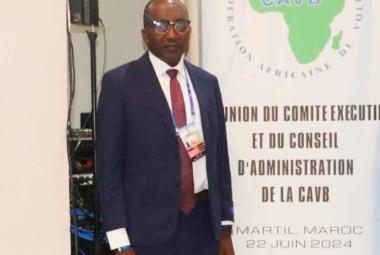By Kumba Leigh
The Ministry of Finance and Economic Affairs, on Friday, April 12th convened a press briefing meant to update on the state of the economy including a review of the past fiscal year and the policy responses to the economic situations. The authorities delved into vital issues like GDP growth, inflation, reserves and banking sector liquidity, public debt and sustainability, public finances, public financial management reforms, partner engagement, policy and institutional assessments, and the evolution of the economic growth from 2016 to 2024.
Giving an overview of the economy, the Minister of Finance and Economic Affairs, Mr Seedy Keita, reported that economic growth between 2016 and 2024 has been positive compared to other countries in the Sub-region; that The Gambia continues to outperform bigger nations like Ghana, Serra Leone, and Nigeria.
On the evolution of the economy from 2016 to 2024 fiscal year, the Finance Minister said Gambia’s Gross Domestic Product growth rate was at a low of 1.6 percent in 2016, but moved to 4.8 percent in 2017, and struck high to 7.2 percent in 2024. However, he said at the backdrop of Covid 19 in 2020, the GDP had collapsed to 0.6 percent, and rebounded to 5.3 in 2021, and projected at the amount of 5.6 in 2023 with the expected rate of 6.2 percent respectively.
On inflation, reserves, and banking sector liquidity, Mr Keita said despite significant increase in inflation from 11.5 percent in 2022 to 17 percent in 2023, The Gambia’s economy is safe and sound with the country’s gross external reserve covering 5.6 months at December 2023.
He reported that the country’s total debt stock increased from D46.3 billion in 2016 to D110.6 billion in 2023, which was largely attributed to inherited large domestic and external debt from the previous administration; costly domestic debt-service obligations; high contingent liabilities stemming primarily from NAWEC, and several loss-making State-Owned Enterprises (SOEs); debt restructuring during the outbreak of COVID-19; the depreciation of the dalasi against major currencies; and new borrowing to finance ongoing development projects.
The Minister further revealed that between 2016 and 2023, the government-generated revenue from domestic source increased by roughly 134 percent, from 7.1 billion dalasi in 2016 to 17.8 billion dalasi in 2023 representing an annual growth rate of 19 percent.
“There is no public assets registered and now we have approved the Public Asset Management Policy (PAMP) to put in place all the public assets so that all the bridges, factories that are state-owned, will be organised in one place for every Gambian to have access and know what is the stock of assets the country has, and also resource mobilisations in the form of asset recycling, in the Sene-Gambia Bridge, which is at an advanced stage,” Hon Keita explained.
Public Debt & Debt Sustainability
On public debt and debt sustainability, the Economic Affairs minister said between 2018 and 2020, The Gambia’s domestic debt stock did not change much. He affirmed that the change in total public debt stock results from external debt restructuring and the depreciation of the Gambian Dalasi against major currencies.
He narrated that following the outbreak of COVID-19, The Gambia secured commitments to restructure its bilateral and multilateral debt to alleviate the country’s debt service burden, engage in debt restructuring, and to eliminate immediate fiscal pressure emanating from debt service payments. He informed that total debt stock increases as external debt disbursements continue, while debt principal payments are deferred.
On the evolution of public debt, Mr Keita revealed that in 2017, the new administration inherited an overdrawn TMA to the tune of D10.8 billion, which was subsequently securitised by issuing a 30-year non-marketable bond. “And in 2018, the new government signed an MOU agreeing to assume the majority of NAWEC’s debts and issued a 7-year non-marketable NAWEC bond up to the tune of D1.7 billion to make debt service payments on behalf of the national utility provider. “ These led to an increased domestic debt stock from D21.8 billion in 2016 to D32.5 billion in 2018. Similarly, the new administration inherited legacy debt of USD50.4 million (roughly GMD 2.4 billion) arising from confirmed debt in infrastructure contracts by the previous regime”.
New Borrowing
The Minister disclosed that the new borrowing is equivalent to D41.9 billion. The new debts, he said, were directed towards financing projects such as the new Bertil-Harding Highway; phase I of the University of the Gambia (UTG) Faraba Campus; rehabilitation, and development of Banjul International Airport; construction of VVIP Lounge at the Banjul International Airport; GAMTEL Broadband Network Project; Port Expansion Project; OMVG Interconnection Project; Gambia Renewable Energy Project; Banjul Rehabilitation Project; road projects in the Greater Banjul Area such as in Kanifing and Brufut); rural roads such as Lamin Koto-Passamas, Nuimi Hakalang, Sabach Sanjally, Kiang, Basse Yorobowal, among others; the construction of the Basse and Brikama markets; and Rice Value Chain Development Project.




